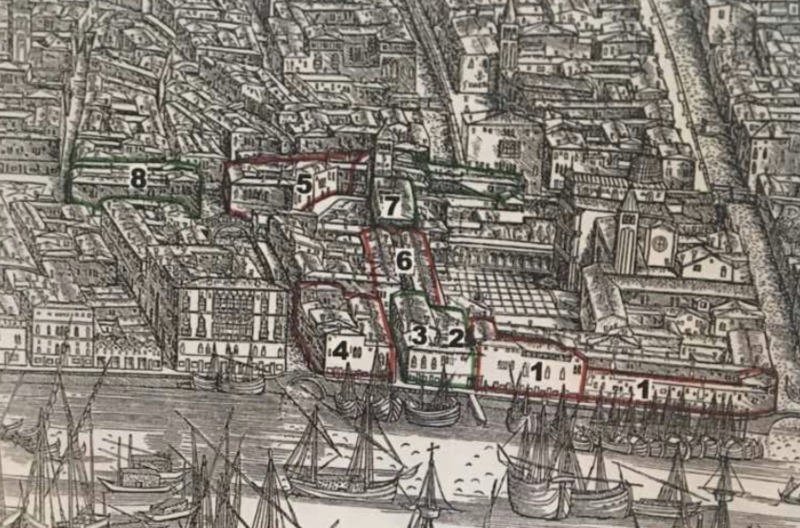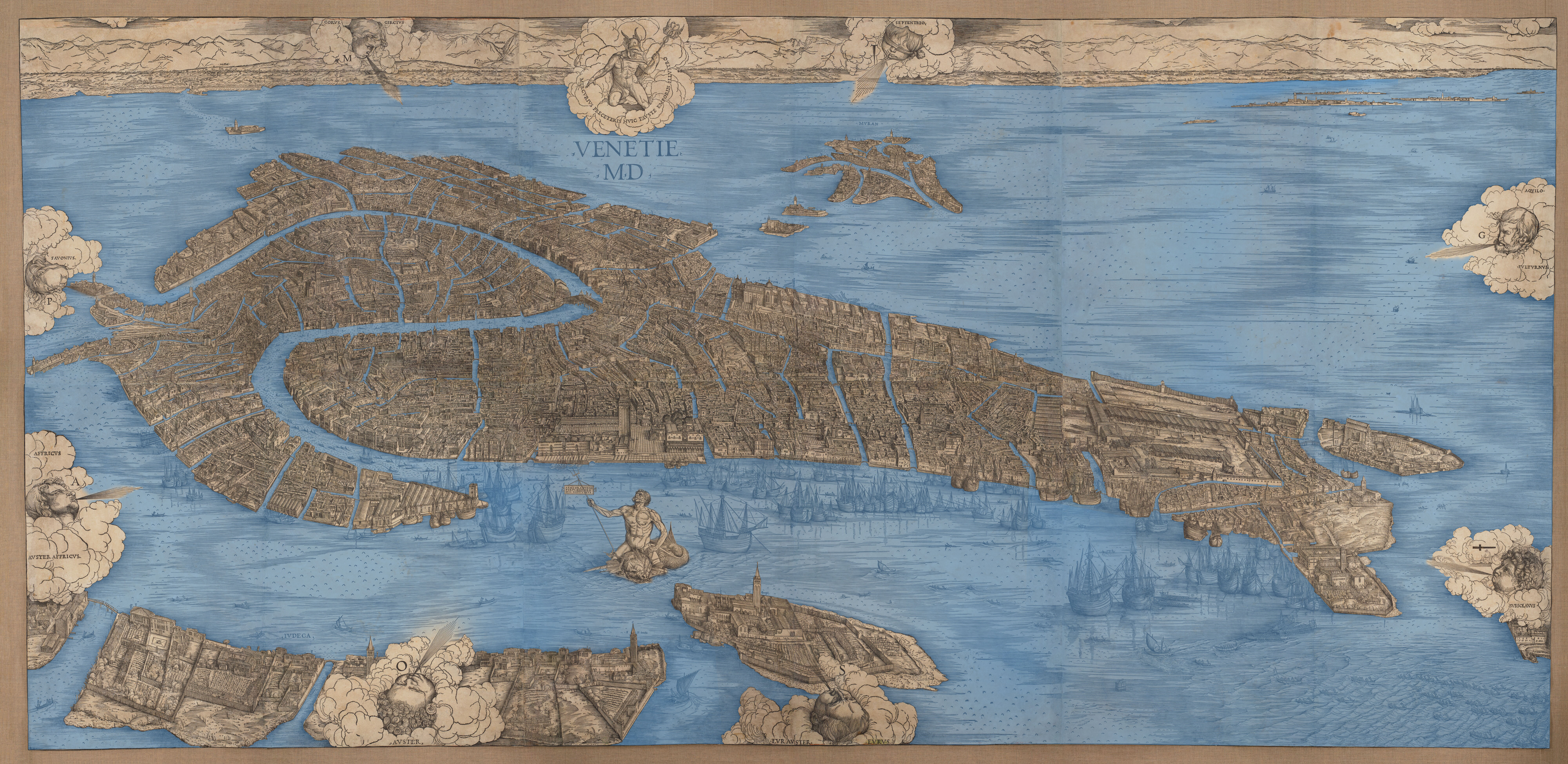Trecento San Zaccaria
Click here to view an interactive map of Trecento San Zaccaria.
During the Trecento, the island of San Zaccaria underwent major changes in its built environment. The inlet by the “Door of San Zaccaria” was filled in, although that remained a point of access to the convent for a privileged few. In addition, two more bridges were added to connect the pedestrian pathway along the Bacino to the neighboring islands. These bridges reveal a new need for pedestrian access to the island, perhaps indicating San Zaccaria’s growing popularity as a church and pilgrimage site.

Property purchases made by the convent between 1305 and 1312, highlighted in red and green outlines and layered over Jacopo de' Barbari's View (1500). From Agazzi, "'Territorio Sancti Zacharie:' La trasformazione del territorio tra IX e XIV secolo," 44.
Between 1305 and 1312, the convent purchased a majority of the prexisting and undeveloped property on the opposite side of the island.[1] This was a common practice for religious houses as a means of income, since the nuns were unable to work or otherwise earn their own financial stability.[2] This purchase afforded the nuns of San Zaccaria control over almost the entire island, both economically and in terms of the built environment. They introduced new pedestrian pathways through the island in addition to building around the edge of the campo. The latter severely constricted the sight lines and visibility both into and out of the church and convent, a necessity given the increase in traffic to the island.
Through the use of this new property, the nuns were able to use the vernacular vocabulary of the city to their advantage. The island conformed to social norms for the built environment around a convent, in which the women were physically secluded from the rest of the city, not just by spatial distance but also hidden behind thick walls. However, given that the nuns owned much of the property, they were capitalizing on the need for such a built environment for their own benefit.
[1] Michela Agazzi, “‘Territorio Sancti Zacharie’: La Transformazione Del Territorio Tra IX e XIV Secolo, Da Contesto Agricolo e Difensivo a Città Densamente Abitata. Il Ruolo Del Monastero Benedettino,” in “In Centro et Oculis Urbis Nostre”: La Chiesa e Il Monastero Di San Zaccaria, ed. Bernard Aikema, Massimo Mancini, and Paola Modesti (Venice: Marcianum Press, 2016), 44–45.
[2] Mary Laven, Virgins of Venice: Broken Vows and Cloistered Lives in the Renaissance Convent, 1st American ed (New York: Viking, 2003), 54.
